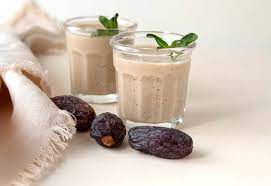All About Milk

Reasons why people don’t drink milk range from taste, personal preference, animal friendliness, or environmental concerns. or it may be due to health conditions or concerns about intolerances, allergies and acne; But in general, the following are the things that should be avoided from eating milk:
lactose intolerance
Lactose is the main carbohydrate in milk. Simple sugars are broken down by an enzyme in the small intestine called lactase. Some people are born without lactase enzyme or their lactase level decreases with age. For these people, eating foods high in lactose means that undigested lactose passes through the intestines and can cause symptoms such as bloating, pain, and diarrhea.
Research shows that small amounts of lactose (up to 15 grams per day) can be tolerated without symptoms. Especially if it is played during the day. A cup of cow’s milk contains about 16 grams of lactose, while a 200 gram tub of yogurt contains 10 grams and 40 grams of cheddar cheese contains less than 1 gram.
Date milk is a very good source of minerals needed by the body because Kurma Mariami Wholesale contain important minerals such as phosphorus, potassium, iron, calcium and magnesium, and milk is also rich in calcium, potassium, phosphorus and sodium.
Date milk is a very nutritious and useful drink for pregnant and lactating mothers, which is rich in minerals and calcium and is very effective in the better development of the fetus and the health of the mother’s body.
The amount of protein in the combination of milk and dates can improve the level of protein in the brain and prevent the weakening of memory and aging of the brain and promote brain health
Strengthen teeth
Date milk also plays a very effective role in strengthening and strengthening the teeth, and consuming this drink during the day is very beneficial for the health of the teeth due to the amount of calcium it contains.
Allergy to cow’s milk
Cow’s milk allergy occurs in about 0.5 to 3% of one-year-old children. By the age of five, about half of them have grown into teenagers and 75% of them have grown into teenagers. However, one survey found that 9% of preschool children had severe allergies with anaphylaxis.
Symptoms of cow’s milk allergy include hives, skin rash, cough, wheezing, vomiting, diarrhea, or facial swelling.